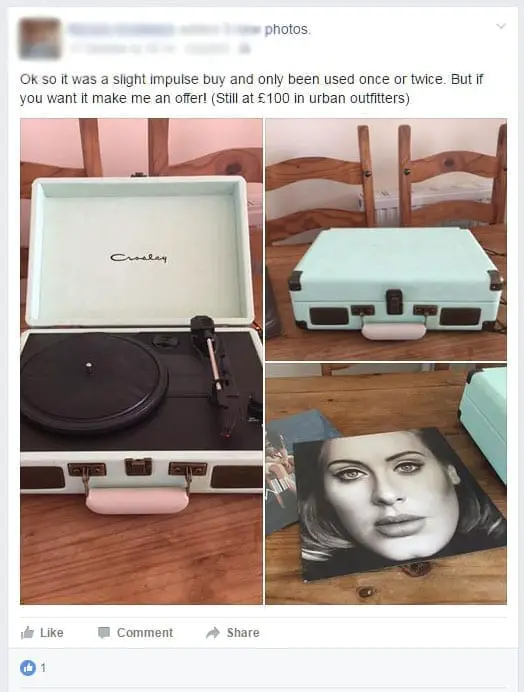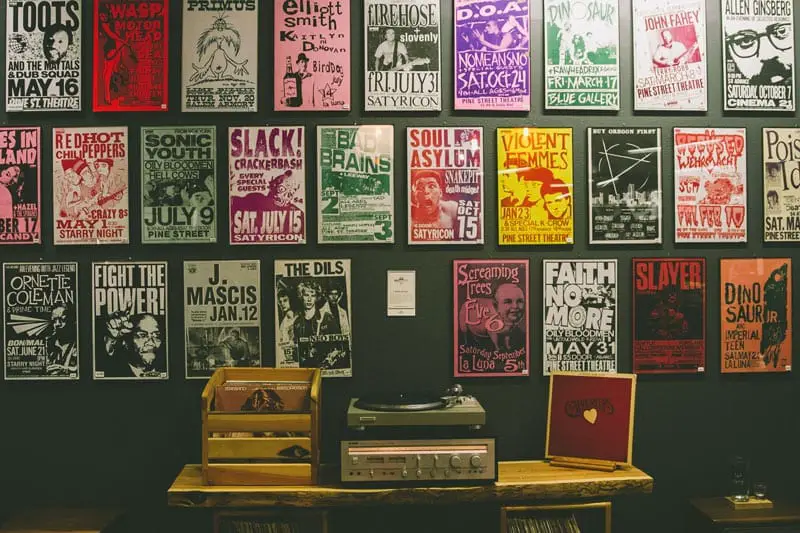If you’re an avid vinyl fan, you’ve likely heard the news that revenue from vinyl record sales outstripped digital downloads for the first time during the week spanning November 25th to December 1st. Great news — at least on the surface — but is it sustainable? We take a look at some of the recently published stats in an attempt to draw some conclusions.
There’s no doubt, the recent sales figures of vinyl records show a compelling shift in how we consume our music. To be exact, vinyl records earned the record industry £2.4m in week 48 of 2016, while downloads delivered £2.1m. That’s a significant shift from last November, when the figures looked very different, with vinyl albums drawing £1.2m and digital records pushing £4.4m.
Figures source: Entertainment Retailers Association (ERA)
2016 marks the eighth consecutive year of growth for the vinyl format, although it still represents less than 2% of the overall music market. On the surface, the increase in vinyl sales looks very promising, but scratch a little below the surface, and it’s obvious the future of vinyl is still very much unclear.
Perhaps one of the biggest alarm bells comes from a BBC/ICM poll conducted earlier this year, where it was revealed that while people who use music streaming services are more likely to buy vinyl, only 52% of them said they actually played the record. Additionally, 7% didn’t even own a turntable.
The figures are interesting — particularly when combined with the news from earlier this year that Amazon’s hottest 2015 Christmas seller was the Jensen JTA-230 3-speed stereo turntable with built-in speakers, priced at just $51.99. All of this would appear to suggest, that while vinyl sales are growing, the vast majority are either never played, or worse, played on poor quality equipment. In many cases, the audio quality of these turntables are so bad the listener quickly loses interest once the initial novelty wears off.

I was recently reminded of the cheap turntable predicament when a friend asked for my opinion on a Black Friday deal they’d spotted. I attempted to explain why I couldn’t recommend an all-in-one turntable and proceeded to show them my previous articles on getting started with vinyl. My friend was very quickly confused by the need for so many different components (particularly the pre-amp) and was even more intimidated by the cost. In the end, they went for the cheap system against my advice. My point here is, how long will it take before they ultimately end up with buyers remorse like the example above? And, how many others end up giving up on vinyl all together as a direct result of poor quality equipment?
The ERA has suggested the increase in vinyl sales could be attributed to the popularity of vinyl as a Christmas gift and the growing number of non-music retailers that now stock records. When we consider the fact two of Britain’s biggest grocery stores (Sainsbury’s and Tesco) now stock vinyl – and, when we examine the likes of Urban Outfitters in the US/UK – it’s easy to see why they might draw this conclusion. If they’re right, I’d argue there is a serious risk the vinyl sales resurgence could be an unsustainable fad.
But Wait, There’s Hope!
However, it’s also worth considering this scenario from another angle. The sales results revealed by the ERA also tell us that people aren’t switching from downloads to vinyl – they’re switching from downloads to streaming services. We also know that many are then choosing to buy a physical format to support an artist they love, and it’s easy to see why vinyl is an appealing choice. The large size of vinyl record sleeves lend themselves to showcasing artwork; the whole medium is far more tangible; and, there’s just something far more captivating about the whole experience. CD’s just can’t deliver in the same way.
i have a compulsion to buy everything the @protomen have ever put on vinyl even though i don’t own a turntable
— B Pippin (@flamingspatula) November 25, 2016
Don’t own a turntable? The mp3 comes with “The Uplifting Sound” vinyl. And it makes a pretty cool work of art! https://t.co/hTMjCyQL43 pic.twitter.com/S3VEoxZTku
— YourFavoriteEnemies (@yfeofficial) December 6, 2016
From the figures released, and the behaviors demonstrated by consumers, I’d say it’s unlikely that vinyl record sales will continue to grow at the rate they have. The most likely situation is that we’ll reach a plato at some point in the future. Streaming services look set to be the mainstream choice for some years to come, but I can see vinyl settling in as the dominant physical medium for those who care about the product and supporting artists.
Have Your Say
What do you think? Will vinyl sales keep reaching for the stars? Or are they on a highway to nowhere? Let us know in the comments below.




As an artist, it is of utmost importance to manufacture vinyl records. Vinyl records have a unique sound quality that cannot be replicated by digital formats. Moreover, vinyl records are a tangible representation of an artist’s work, which can be collected and cherished by fans. Manufacturing vinyl records also adds to an artist’s credibility and authenticity, making them stand out in a crowded music industry.
I am more encouraged by the nascent trend of High-End audio venues where people pay a cover charge to hear vinyl played well, This fits with the trend of renting instead of buying to achieve experiences with a high entry cost.
Sounds interesting. Do you have a link to an example venue? I’d love to check it out.